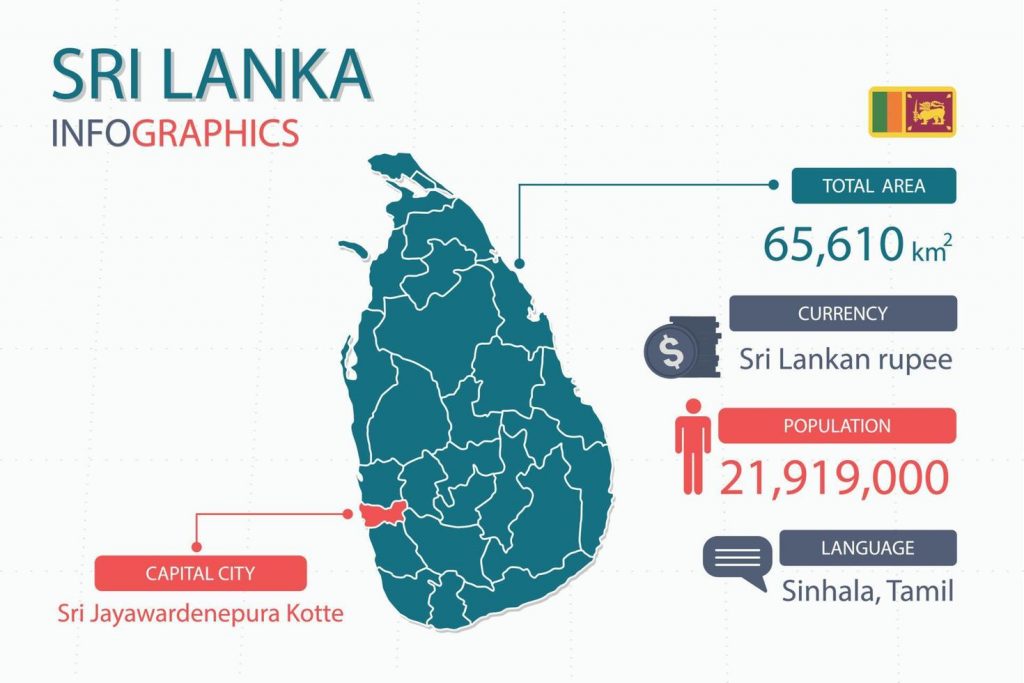The origins of the Tamil Language
Tamil has official status as a language in Sri Lanka and Singapore. In addition, it also is an official language in a number of certain regions in other countries including India, being one of the twenty-two scheduled languages, where it is spoken throughout much of South India, in states such as Kreala, Karnataka, and Andhra Pradesh. In addition, it is one of the languages in which education is conducted in Malaysia.
While not a major language of the world in modern times, it is considered to be a language with a long and rich history. Documentation of Tamil literature has existed for over two thousand years, dating back to around 300 BC. It is a very diglossic language, meaning that formal and informal registers are quite different. Tamil contains extremely different registers varying by socioeconomic status (with a high register and low register), but also in terms of the spoken and literary varieties, where literary Tamil has preserved much of the ancient characteristics of the language.
As compared to more common Western languages, Tamil differs in the extensive use of its suffixes to create meaning. The suffixes are attached to words to change the meaning and multiple suffixes can be added. This can be compared to languages like Japanese or Korean, to a certain extent. Grammatically, the verb usually comes at the end of a clause, and a subject is not needed. The word order in general is much more flexible than the one found in many Romance languages.

In terms of the language family, Tamil stems from Dravidian. Unlike many other Dravidian languages and other world languages, Tamil remains relatively ‘pure’ in the sense that not many loanwords have entered the language, and new words are constantly being created in order to preserve the traditional Tamil characteristics of the language. Such an effort is due to many factors. First, there has been a conscious effort to derive Tamil vocabulary straight from its parent language, Dravidian, due to a philosophy of linguistic purism, especially among leading scholars and grammarians of the Tamil language. While there are words that have entered from languages ranging from Sanskrit to Malay, and even Greek, as well as modern influences from neighbouring languages as well as European ones, the rate of assimilation to Tamil has been quite low compared to those of other world languages because of this conscious effort. Thus, many neologisms are created, even though whether they are used colloquially or not is an entirely different matter.
The Tamil script is an abugida, where consonants are the principal element. Vowels are attached to consonants to change the consonants characteristics. This is unlike English where vowels and consonants seem to play an equal role and is comparable to other abugidas like Thai, Khmer, and Lao. The Tamil script is thought to evolve from the Brahmi script. Like many other similar writing systems, it is written from left to right, and from the top to the bottom of the page. In addition to having its own ‘alphabet,’ it also uses its own numerical system. More interestingly to those not familiar with the language, there are symbols for other concepts as well, such as day, month, and year (similar to Chinese) as well as other concepts like debit and credit, and more. This may be comparable to Chinese characters in a way, as many of the more basic Chinese characters represent distinct meanings.
In terms of its history, Old Tamil is recognized by scholars to have emerged between the 5th century BC to the 8th century AD. There is evidence of Tamil transcriptions in caves and pottery that existed during ancient times. From this vast time period, evidence of poetry works on grammar, and other literary artefacts exist as well. What characterized Old Tamil from later iterations was the lack of a present tense. Rather, there was a past form and a non-past form.
Around the 8th century, Tamil underwent some changes and scholars consider this the time when Middle Tamil emerged. This classification is based on an emergence of a present tense. In addition, there were also other grammatical and phonological changes. A very important evolutionary step, though, was the use of a new script during the Pallava dynasty. It was during this time that Sanskrit loan words entered the language. Also during this time, much literature was produced, both of a secular and religious nature.
Modern Tamil, despite its name, is represented by the work of Nannul, a scholar who wrote the first Tamil grammar around the 13th century. This grammar is the basis of both the written and spoken language of modern Tamil. However, due to the long time span, there have been changes in the colloquial language, mainly due to contact with European languages through times of trade and colonization. Thus, European language words have been used by Tamil speakers. However, in the 20th century, there has been a strong influence of a purist philosophy in terms of preserving the original language. Such a movement endeavours to remove any ‘foreign’ influences on the language, including any deviations that stem from Sanskrit.
According to modern scholars and linguists, Tamil is an extremely noteworthy language. It has a very long and well-recorded literary tradition that has continued on for many centuries, and such records help us understand the history of the region in a very deep manner. It is considered a classical language of the world with a continuous tradition stemming from ancient times. Such characteristics have given scholars reason to consider it one of the great languages of the world.
VEQTA can provide you with a perfect Tamil translator for your Tamil translation, English to Tamil translation and Tamil to english translation for the your targeted locale. Our translations to Tamil are created with your target audience in mind to meet your expectations.
If you need to translate Tamil – Get in touch today!
A dedicated team of Tamil translators who combines Experience, Specialized Subject Matter Expertise with best Translation Practices to deliver quality second to none.
Tamil Subject Expertise
Tamil Translators
Tamil Editors
Tamil Copywriters
Tamil Reviewers
Tamil Voice dubbing
Tamil Subtitling
Tamil Transcription


